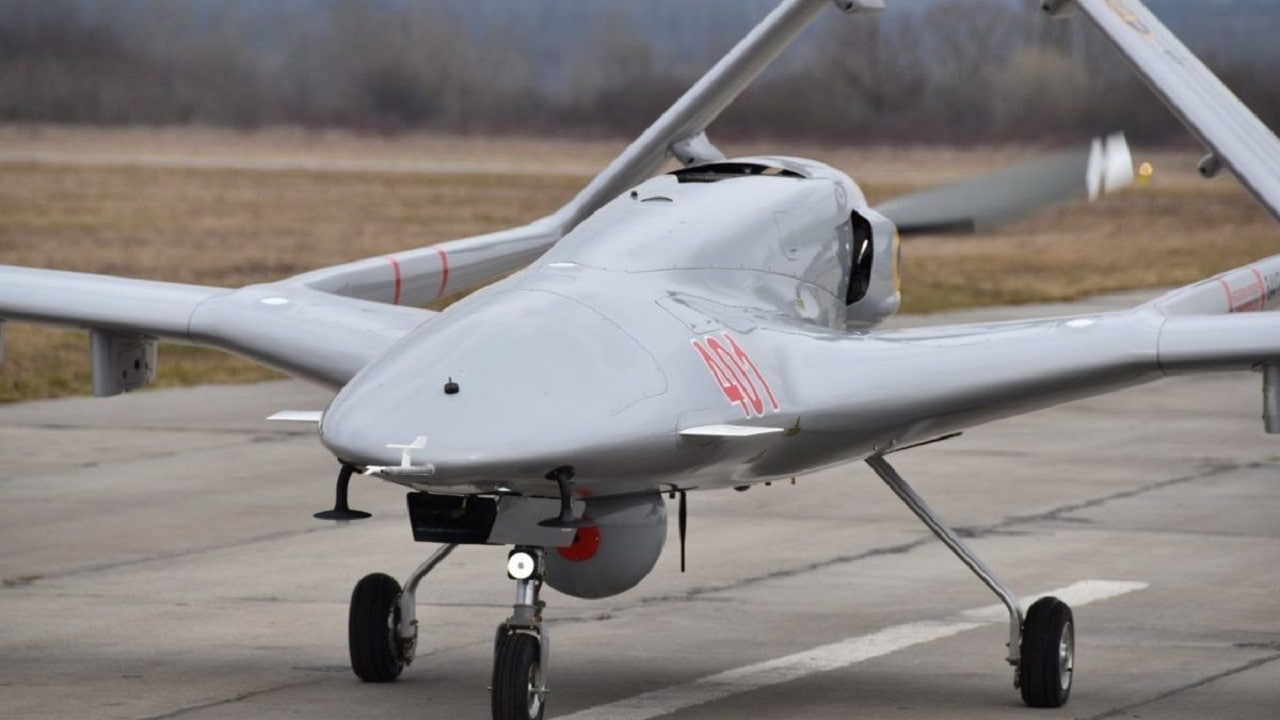More Drones Are Headed to Ukraine – Despite facing increasingly intense bombardment from Russian forces, Ukraine has been successfully using its not-so-secret drones to great effect. The Turkish-made Bayraktar TB2 unmanned aerial vehicles (UAVs) have proven to be a powerful asset.
Moreover, as Russian tanks have been easily destroyed or even stolen by a few daring tractor-driving Ukrainians, this could be a sign that the era of the tank has given way to the drone. The Bayraktar can loiter over tanks and artillery, and then launch missile strikes with deadly accuracy.
As previously reported, each of the drones can reach altitudes of 25,000 feet and fly for 27 continuous hours. Operated remotely from up to 300 km away, each one of the drones is also capable of bearing four laser-guided bombs or rockets, for a total payload of some 150 kilograms.
More Drones Heading to Ukraine
The Ukrainians may be able to build on their success at targeting the Russians, as this week the White House announced that an additional 100 “tactical unmanned aerial systems” are part of a new $800 million weapons package bound for the besieged nation.
These are the small “Switchblade” drones, which unlike the U.S. military’s long-range Predator drones or even the Turkish-made Bayraktar TB2, are not armed with a rocket. Rather the Switchblade is the missile, and it uses GPS to guide itself straight into the target where it can detonate its payload. According to ABC News, the smallest version, the Switchblade 300, fits in a backpack, weighs only 5.5 pounds, and has a range of about six miles. The drone can be launched from a small mortar tube.
The larger Switchblade 600, which weighs in at around 50 pounds, is armed with an anti-tank warhead and can be employed against targets up to 25 miles away. Both variants feature a “wave-off” feature, which allows the human operator on the ground to abort an attack – such as if civilians appear or the enemy moves from its position.
“These tactical UAVs can be useful against Russian vehicles and artillery,” a senior U.S. defense official told ABC News.
Taking out Russian long-range artillery has become increasingly important for Ukraine as Russian forces have seemingly halted their tank advances and instead have increased the bombardment of major cities. The drones could allow the Ukrainians to strike back against the artillery positions.
Will Russia Deploy its AI-Powered Drones?
It isn’t just the Ukrainians that may be seeing drones as a potential game-changer. Russia has also developed some sophisticated UAVs, including its KUB-BLA, a lethal drone that is known as “loitering munition” or even a “ suicide drone.”
With a wingspan of 1.2 meters, it can be fired from a portable launcher and can travel up to 80 mph for around 30 minutes and then crash into a target, detonating a 3-kilo explosive. The drone was unveiled at a Russian air show in 2019, and reportedly features “intelligent detection and recognition of objects by class and type in real time.”
In other words, it utilizes artificial intelligence (AI) technology to seek out enemy targets. So far Russia hasn’t deployed the KUB-BLA in Ukraine – but Moscow so far has largely held back its most cutting edge weapons. However, as Russian losses mount, Moscow may look to reverse its fortunes on the battlefield.
That would certainly be a cause for concern.
“The notion of a killer robotwhere you have artificial intelligence fused with weaponsthat technology is here, and it’s being used,” Zachary Kallenborn, a research affiliate with the National Consortium for the Study of Terrorism and Responses to Terrorism (START), told Wired.
However, another expert on drones dismissed the AI capabilities of such loitering munitions, at least for now.
“The companies that produce these loitering drones talk up their autonomous features, but often the autonomy involves flight corrections and maneuvering to hit a target identified by a human operator, not autonomy in the way the international community would define an autonomous weapon,” added Michael Horowitz, a professor at the University of Pennsylvania, who keeps track of military technology.
The greatest danger is that Russia may not care if its suicide drones target military or civilian targets.
Now a Senior Editor for 1945, Peter Suciu is a Michigan-based writer who has contributed to more than four dozen magazines, newspapers and websites. He regularly writes about military hardware, and is the author of several books on military headgear including A Gallery of Military Headdress, which is available on Amazon.com. Peter is also a Contributing Writer for Forbes.

